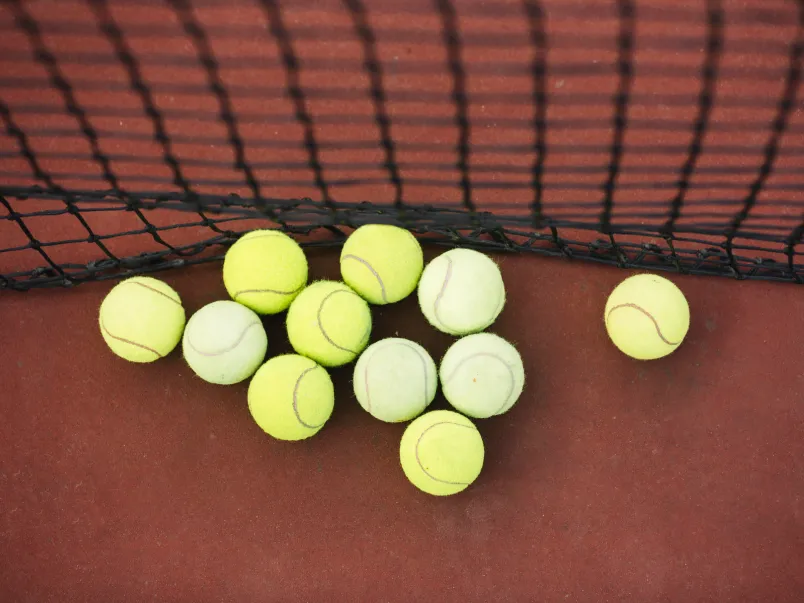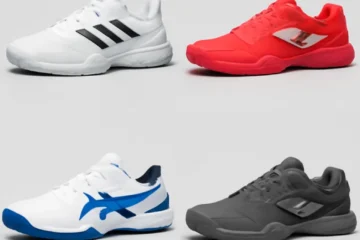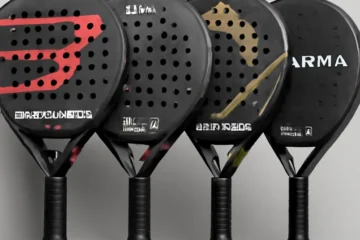Have you ever stepped onto a padel court, only to feel that your padel balls are either too slow, too fast, or simply not bouncing the way you want? If so, you’re not alone. In fact, the court surface you play on plays a significant role in how the ball behaves. Just like in tennis, where the type of ball used can affect gameplay, padel balls should be chosen based on the surface type to maximize performance, control, and enjoyment.
In this article, we’ll explore how different padel balls interact with various court surfaces, and how understanding this relationship can help you choose the perfect ball for each scenario. From high-pressure balls to low-pressure balls, we’ll break down everything you need to know to elevate your padel game.
Part 1: Understanding the Basics – Pressure and Feel
Before we dive into how to match padel balls with different court surfaces, it’s crucial to understand the basic types of padel balls. The primary differences between these types revolve around internal pressure, bounce, and speed. These characteristics can significantly affect how the ball feels and plays on the court.
1.1 High-Pressure Balls (The Standard)
Characteristics:
High-pressure balls are the go-to choice for most professional and advanced padel players. They feature a higher internal air pressure, which results in a faster game with a higher bounce. These balls are designed to perform at their best on harder, faster surfaces where players need precision and agility.
Best For:
Experienced players, competitive matches, and surfaces that require faster ball speeds and higher bounce.
Advantages:
- Faster ball speed, ideal for competitive and advanced players.
- Higher bounce, which allows for more dynamic shots.
- Suited for fast court surfaces, where the ball’s speed needs to be maintained.
Common Brands/Models:
- Wilson Padel Pro
- Bullpadel Vertex
- Adidas Padel RX Series
1.2 Low-Pressure Balls (The Specialists)
Characteristics:
Low-pressure balls are softer and have less internal pressure compared to high-pressure balls. These balls are designed for slower-paced games, offering better control and a lower bounce. The reduced internal pressure also makes them easier to control, providing a more relaxed experience for beginners and less aggressive players.
Best For:
Beginners, children, high-altitude play, and slower court surfaces where more control is needed.
Advantages:
- Slower ball speed, allowing for more controlled rallies.
- Lower bounce, which helps reduce fast ball movement on slower surfaces.
- Easier to control for players still mastering their technique.
Common Brands/Models:
- Dunlop Padel Pro Soft
- Bullpadel Hybrid Soft
- Head Padel Pro S
1.3 The Universal Factor: Durability
One key factor that players often overlook when selecting a padel ball is durability. The felt covering of a ball plays a huge role in how well the ball performs over time. Balls with high-quality felt are more resistant to wear, especially on abrasive surfaces like artificial grass or concrete courts. Weaving and felting also affect the ball’s overall feel, contributing to how it responds to each hit.
Part 2: Matching Padel Balls to Court Surfaces
Now that we understand the basics of padel balls, let’s explore how different court surfaces impact ball performance. Selecting the right ball for each surface can make a huge difference in your game, offering better control, bounce, and overall playability.
2.1 Fast Courts: Artificial Grass with Silica Sand
Surface Characteristics:
Artificial grass courts with silica sand are a common choice in padel, offering a surface that’s both durable and consistent. However, the sand makes the surface harder and more abrasive, which can cause the ball to skid and lose bounce. As a result, balls tend to travel faster and with a lower bounce, which can disrupt a player’s rhythm.
The Challenge:
On fast courts, high-pressure balls can become uncontrollably fast, leading to difficult rallies and poor ball control. The challenge is to find a ball that can slow down the game without sacrificing too much speed or control.
Recommended Ball Type:
Low-Pressure Balls or Soft-Feel Balls. These balls slow the game down, offer a better bounce height for attacking shots, and provide superior control. The softer pressure also helps mitigate the abrasive effects of the sand, extending the life of the ball.
Example Brands/Models:
- Bullpadel Hybrid Soft
- Head Padel Pro S
- Dunlop Padel Pro Soft
2.2 Slow Courts: Porous Cement & Artificial Turf (without sand)
Surface Characteristics:
Porous cement and non-sandy artificial turf are softer and more absorbent compared to other court types. These surfaces tend to “grab” the ball, significantly slowing it down and sometimes causing it to sit up for an easy volley. As a result, the game can become sluggish and less dynamic.
The Challenge:
With slower court surfaces, the ball can feel heavy and unresponsive, making the game less exciting. Players need a ball that can inject some pace and bounce into the game to keep the action lively.
Recommended Ball Type:
High-Pressure Balls. These balls are designed to offer more speed and bounce, making them ideal for slow surfaces. They ensure that the ball travels at a good pace, maintaining a competitive edge.
Example Brands/Models:
- Head Padel Pro
- Bullpadel Vertex
- Adidas Padel RX Series
2.3 The All-Rounder: Indoor & Enclosed Courts
Surface Characteristics:
Indoor courts often feature artificial grass with sand, but without the environmental factors such as wind or sun. The surface is typically consistent, offering a medium-paced game with minimal distractions. The lack of weather variables makes indoor courts an ideal environment for testing different ball types.
The Challenge:
Indoor courts require a ball that offers a perfect balance between speed, control, and durability. A ball that’s too fast or too slow can significantly affect the flow of the game.
Recommended Ball Type:
Standard High-Pressure Balls or Advanced All-Round Balls. These balls provide a balanced performance, offering good speed and control without being too difficult to handle.
Example Brands/Models:
- Wilson Padel Pro
- Kuikma PR990
- RS Padel Blacklight
2.4 Special Conditions: High Altitude & Cold Weather
High Altitude:
At high altitudes, the air pressure is lower, which causes standard high-pressure balls to expand more. This results in a ball that bounces higher and flies faster, making it difficult to control and harder to play with.
Recommended Ball Type:
Official High-Altitude Balls. These balls are specifically designed to compensate for the lower air pressure by using low-pressure technology, which prevents the ball from becoming too bouncy or fast.
Cold Weather:
Cold temperatures reduce the internal pressure of the ball, causing it to feel “dead” or unresponsive. The ball’s bounce is greatly reduced, and the game becomes slower and less dynamic. Using fresh, high-quality balls can make a significant difference.
Recommended Ball Type:
In very cold weather, players often prefer soft-feel balls that maintain a good level of control and comfort in less-than-ideal conditions.
Part 3: Pro Tips and Final Considerations
3.1 When in Doubt, Ask the Club
Most padel clubs know their courts best and can recommend the ideal ball for their specific surface. Don’t hesitate to ask them for advice, as they can provide insights based on their experience and your playing style.
3.2 Consistency is Key
Once you find a ball that works well for your regular court, stick with it. Consistency is key in padel, and having the same ball to practice with will help you develop muscle memory and consistency in your game.
3.3 Don’t Forget to Warm Up with Old Balls
Before jumping into your match with a fresh set of balls, warm up with used balls. This helps save the new balls for the match, extending their lifespan and performance.
3.4 The “Squeeze” Test
A quick and simple way to check the pressure of your padel ball is the “squeeze” test. If the ball feels soft and squishy, it might not be the right one for your surface. Balls with proper internal pressure will feel firmer and maintain their shape during play.
Conclusion
In conclusion, selecting the right padel ball for each court surface is essential for optimal performance and enjoyment. Whether you’re playing on fast artificial grass, slow porous cement, or high-altitude terrain, there’s a ball designed to suit your needs. Remember, slow courts benefit from high-pressure balls, while fast courts thrive with low-pressure options. With these insights, you’ll be able to make better decisions and enhance your game, giving you more control, better consistency, and more fun on the court.
Choosing the right ball for the right surface is a simple yet highly effective way to elevate your padel game. Happy playing!
FAQs
1. What is the difference between high-pressure and low-pressure padel balls?
High-pressure balls have more internal air pressure, making them faster and offering a higher bounce, which is ideal for fast court surfaces and advanced players. Low-pressure balls have less internal pressure, making them slower and offering a lower bounce, which is perfect for beginners, high-altitude play, or slower court surfaces.
2. How do I know which padel ball is best for my court surface?
Choosing the right ball depends on the type of court you play on. For fast courts like artificial grass with silica sand, low-pressure balls are ideal. For slow courts such as porous cement, high-pressure balls are recommended. Indoor and enclosed courts usually perform well with high-pressure balls as well. At high altitudes, opt for official high-altitude balls to compensate for lower air pressure.
3. Can I use any padel ball on any surface?
While it’s possible to use any ball on any surface, choosing the right ball for the specific surface you play on can greatly enhance your game. It helps with ball control, speed, and bounce, allowing you to play your best and have more fun on the court.
4. How do weather conditions affect padel balls?
Cold weather reduces the internal pressure of a padel ball, causing it to lose bounce and become “dead.” In high-altitude areas, lower air pressure makes standard balls expand more, causing them to bounce higher and fly faster, which can be hard to control. In these cases, using high-altitude or soft-feel balls can mitigate these effects.
5. How long do padel balls last?
The lifespan of padel balls depends on their pressure, the surface you play on, and how often you use them. Low-pressure balls tend to last longer on rougher surfaces, while high-pressure balls may wear out faster due to their greater bounce and speed. Proper storage and using older balls for warm-up can help extend their longevity.
6. Why is durability important in padel balls?
Durability is essential because a ball’s felt covering influences how it behaves on the court. Balls with higher durability resist wear from abrasive surfaces, maintaining their performance over time. A durable ball helps maintain consistent play, reducing the need for frequent replacements.




